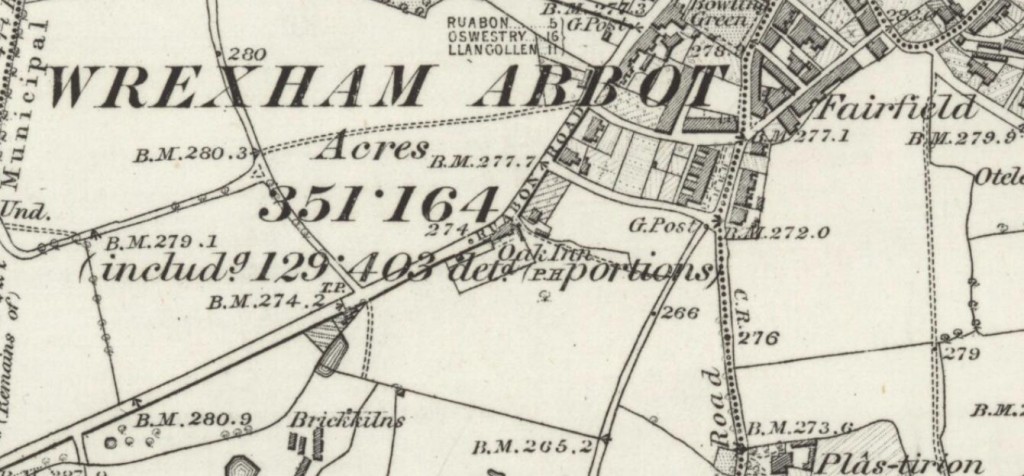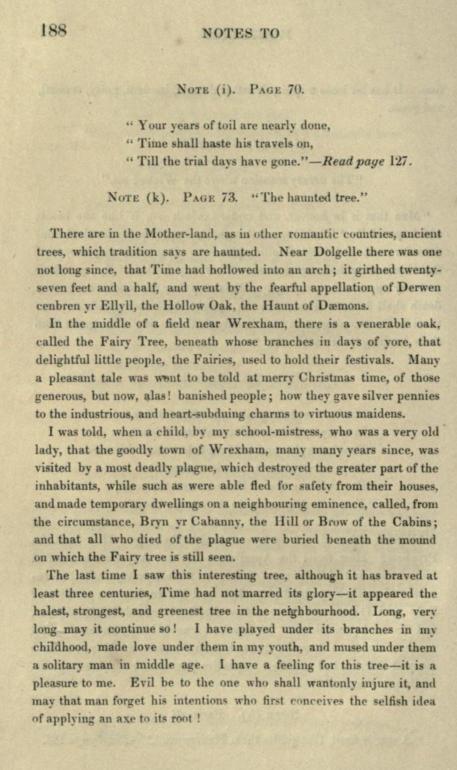Plague Oak at Wrexham (and Fairies) May 12, 2016
Author: Beach Combing | in : Modern , trackback
There are a number of fairy oaks in Wales, as Chris from Haunted Ohio Books, previously illustrated. But this one, the fairy oak of Wrexham, is particularly interesting because of a curious legend associated with it. This article appeared in a book of Welsh poems in 1837. Apparently the fairy tree had grown on a plague burial site!
In the middle of a field in the neighbourhood of Wrexham, there is an oak, called the Fairy Tree, beneath whose branches in days of yore, that delightful people, the Fairies, used to hold their festivals. Many pleasant tale was wont to be told at merry Christmas time, of those generous, now, alas, banished people; how they gave silver pennies to the industrious, and heart-subduing charms to virtuous maidens [love charms?]. l was told, when child, by my school-mistress, who was a very old lady, that the goodly town of Wrexham, many many years since, was visited by a most deadly plague, which destroyed the greater part of the inhabitants, while such as were able fled far from their houses and made temporary dwellings on a neighbouring eminence, called, from the circumstance, Bryn yr Cabanny, the Hill or Brow of the Cabins; and that all who died of the plague were buried beneath the mound on which the Fairy Tree is still seen. The last time I saw this interesting tree, although it has braved at least three centuries, Time had not marred its glory – it appeared the halest, strongest, and greenest tree in the neighbourhood. Long, very long may it continue so! I played under its branches in my childhood, made love under them in youth [tmi?!], and mused under them a solitary man in middle age. I have a feeling for this tree – it is a pleasure to me. Evil to the one who shall wantonly injure it, and may that man forget his intentions who first conceives the selfish idea of applying an axe to its root!

The association with a burial place and fairies is normal for prehistory, but for modern times it is damnably strange. Are the fairies, as Irish sources suggest, really just the dead, living on with us?
The OS map at the head dates from 1879. The oak stood close to the Oak Inn, presumably not an accident.
There was a report from the Antiquary of 1882 (volume 5) which describes some digging at the site. The plague legend is written off but the data is, in any case, interesting.
The mound upon which stands the old oak tree, sometimes called ‘The Fairy Oak,’ at Wrexham, has been purchased by Mr. W. E. Samuel, and will be enclosed in the pleasure grounds of ‘Fairy Mount,’ a house now in course of erection. The tree and mound are to be carefully preserved, but as it became necessary recently to remove some of the adjacent soil, it was decided to cut a narrow trench, and ascertain, if possible, something of the history of the mound, without, however, disturbing the root of the tree. It is a bowl-shaped British barrow… The excavation lately made was cut partly through the tumulus from east to west, and on the original level of the ground about 2$ feet from where the opening was commenced, and at a depth of feet a heap of human bones was found. The bones were very much decomposed, and no urn or cistvaen was found, nor even any considerable quantity of stones near them, but the remains lay in a simple heap surrounded by the soil… As only a small portion of the tumulus was explored, traces of other interments may exist. The supposition that the mound was raised over the victims of the Plague is, of course, unfounded. The ground was restored as soon as the partial exploration was completed, and the owner of the Fairy Oak is now enclosing the mound (176-177).


Today the fairy oak is barely alive behind a heavy iron fence opposite a much healthier chestnut. Lovers of folklore will be pleased to know that ‘[t]he owners of the property have plonked two fairy silhouette figurines (of the type found at a garden centre near you), on the barrow, the elvish characters racing their way across to the chestnut tree.’
Sources
Thomas Cambria Jones, Mortality: a poem sung in solitude (1837)
OD Denbighshire 28 (1879)


